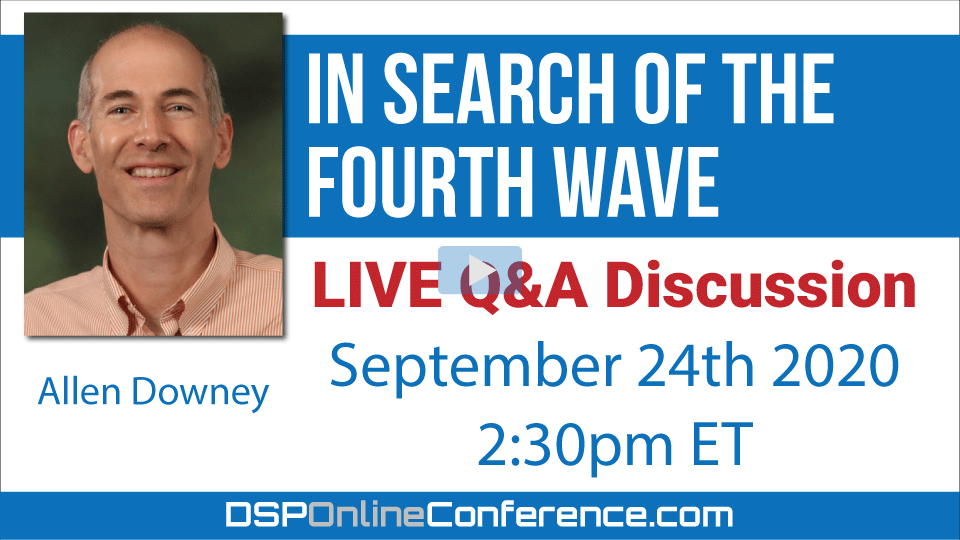Home > On-Demand Archives > Q&A Sessions >
Live Q&A Discussion - In Search of the Fourth Wave
Allen Downey - Watch Now - DSP Online Conference 2020 - Duration: 17:32

Live Q&A session with Allen Downey, following his talk titled 'In Search of the Fourth Wave'
15:40:05 From Michael Kirkhart : This might be helpful 15:40:08 From Michael Kirkhart : https://stackoverflow.com/questions/2060628/reading-wav-files-in-python 15:40:10 From Fredric Harris : in matlab, speedup often happens with preassigning data block lengths... don't know about python 15:40:21 From Leonard Dieguez : Pandas and numpy 15:41:25 From Fredric Harris : question: did you apply a window to time series (besides default rectangle window) 15:42:40 From Leonard Dieguez : scipy has a signal library for the matlab type of processing 15:42:56 From Fredric Harris : I use the derivative to proess time signal till I see an impulse... ten transform doesn't fall.. then integrate back a number of times to match number of dereivatives... spectrum will fall like 1/f^(k+1) 15:43:47 From Arthur Lobo : There is also 1/f noise 15:43:54 From Radu Pralea : Musical rhythm spectra from Bach to Joplin obey a 1/f power law https://www.pnas.org/content/pnas/109/10/3716.full.pdf 15:43:55 From subbotin : Brewster, not python, but kotlin — there is an open-source project on early stages related to distributed processing of such data (I’m working on it). Check it out if that may help you https://wavebeans.io 15:45:23 From Fredric Harris : don't use Gaussian... use Kaiser-bellel 15:45:28 From Fredric Harris : bessle 15:46:34 From Thad Welch : Back to the convolution idea … convolve 6 pulses and you are within 1% of a Gaussian 15:47:04 From Thad Welch : central limit idea 15:47:14 From Fredric Harris : it estimates main lobe, but our interest is often tails 15:47:40 From Brewster LaMacchia : @subbotin thatnk you for that. I use sox sometimes.

